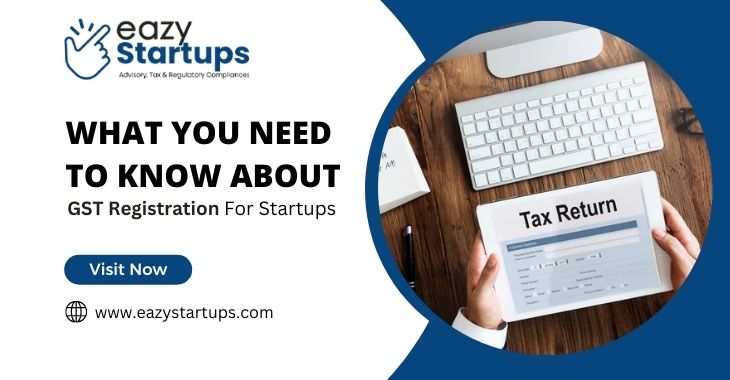So, you’ve got your brilliant startup idea off the ground, and things are looking fantastic! But wait, there’s this thing called GST Registration everyone’s talking about. Is it a necessary evil, or should you just steer clear? Let’s break down the essentials of GST registration for startups in a clear way that keeps things moving.
There is no doubt that GST Registration Online in India involves a lot of complications, but with the assistance of our specialists at Eazy Startups, you can avoid all complications along the path. Contact us for more details.
Now, let’s look at the detailed discussion of the topic:-
- When do you need to register?
- What’s this about mandatory registration?
- How do you register?
- What’s this GSTIN thing?
- Regular vs. Composition scheme – what’s the difference?
- What about those pesky returns?
- The perks of being GST-registered
When do you need to register?
First, you don’t always need to register for GST immediately. You’re off the hook if your annual turnover is less than ₹40 lakhs (₹20 lakhs for some states). But don’t get too comfy! Once you cross that threshold, you’ve got 30 days to get registered. My advice? Keep a close eye on your sales. You don’t want to be caught off guard and end up scrambling at the last minute.
What’s this about mandatory registration?
Here’s the deal – some businesses have to register regardless of turnover. If you’re into e-commerce or selling stuff to other states, you’re in this boat. The same goes for those collecting tax on behalf of suppliers. It might seem like a pain, but trust me, it’s better to be on the right side of the law from day one.
How do you register?
Alright, deep breath – it’s not as scary as it sounds. You must hop onto the GST portal and fill out the REG-01 form. You’ll need some documents – PAN card, address proof, bank account details, etc. Pro tip: double-check everything before you hit submit. Typos are not your friend here!
What’s this GSTIN thing?
Once you’ve completed GST Registration Online, you’ll receive a GSTIN—think of it as your business’s unique ID. You must slap this on all your invoices and official documents. It’s like your startup’s signature, so wear it with pride!
Regular vs. Composition scheme – what’s the difference?
Here’s where it gets interesting. The regular scheme means you charge GST on your sales and claim the input tax credit. It’s more work, but it can be better for growing businesses. The Composition scheme, on the other hand, lets you pay a flat rate on your turnover. It’s simpler, but you can’t claim input tax credit. Choose wisely based on your business model and plans.
What about those pesky returns?
Yep, you’ll need to file returns. How often? Well, that depends on your scheme. For the regular scheme, folks need to file monthly and quarterly returns. Composition scheme? You’re looking at quarterly returns. It might sound like a hassle, but staying on top of this will save you major headaches down the road.
The perks of being GST-registered:
It’s not all paperwork and deadlines! Being GST registered can help your business. You can claim input tax credit, which means you get back the tax you paid on your purchases. Plus, it makes your startup look more legit to bigger companies. Win-win!
Final Thoughts
There you have it – the nitty-gritty of GST registration for startups. Remember, this stuff might seem daunting now, but it gets easier with time. And hey, getting it right from the start sets you up for smooth sailing as your business grows. So take a deep breath, dive in, and don’t be afraid to ask for help. You’ve got this, future startup star! Contact our GST specialists at Eazy Startups today if you want professional help completing GST Registration Online in India.

